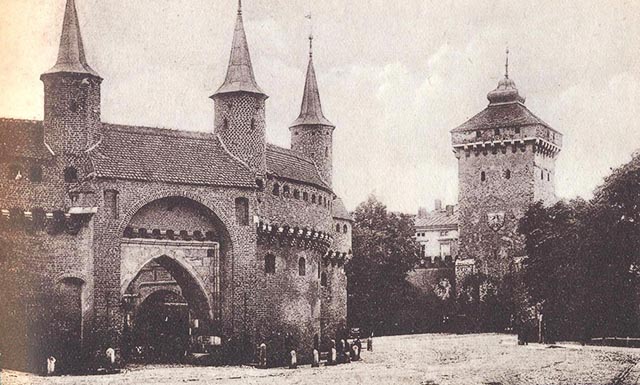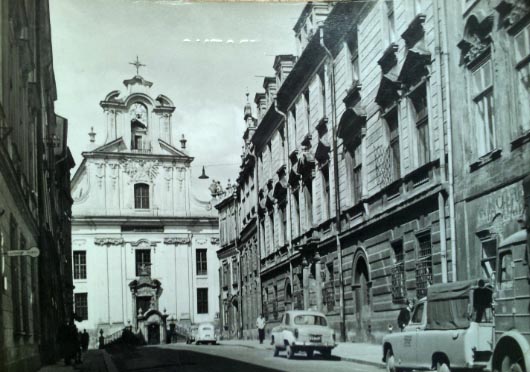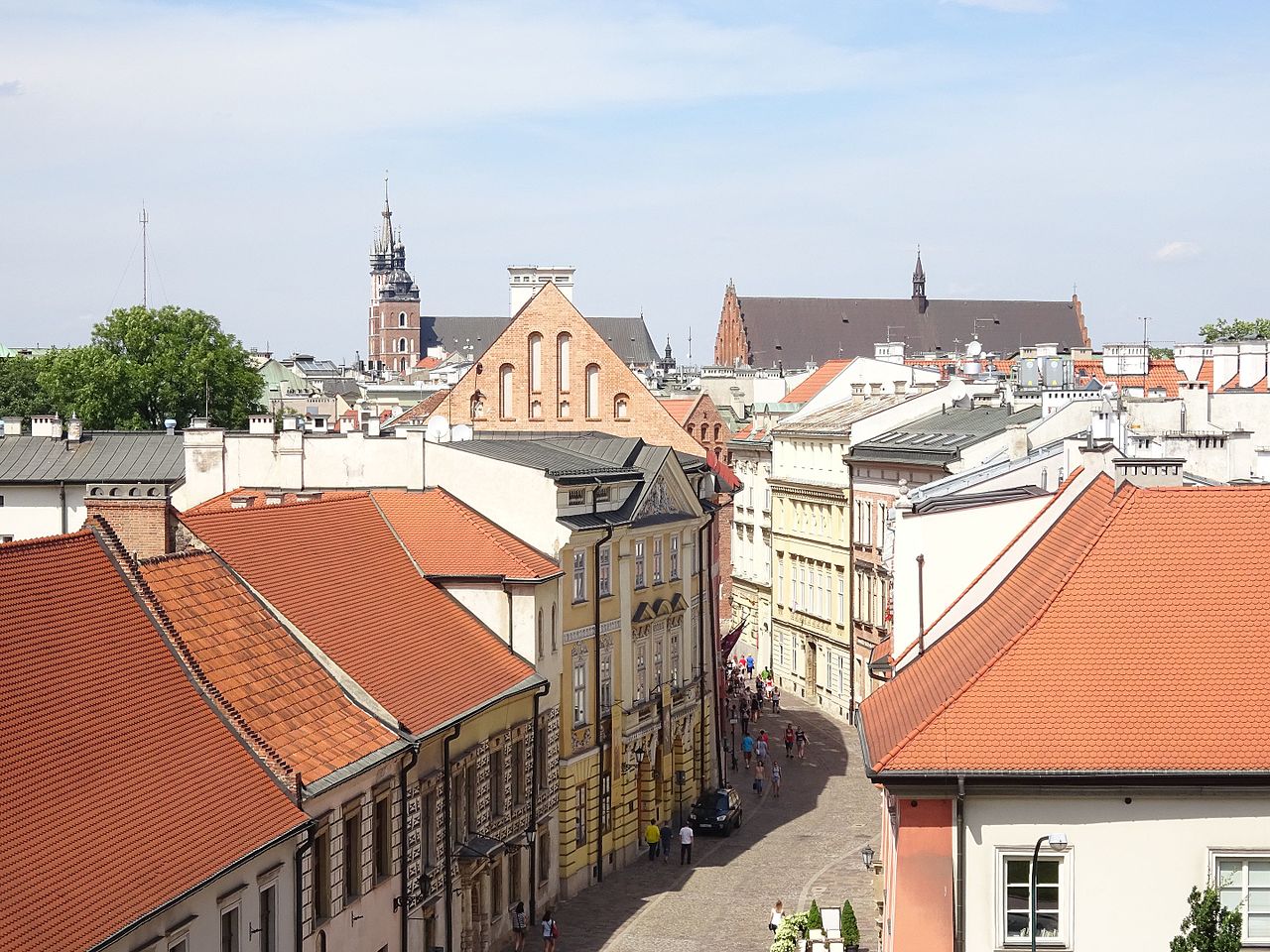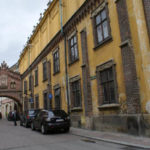 Ulica Karmelicka
Ulica Karmelicka
Następną przecznicą na południe od ul. Szczepańskiej jest ul. Szewska, która ma wybitnie handlowy charakter. Na jej końcu został odtworzony zarys bramy szewskiej. Ulicą kontynuującą kierunek wyznaczony przez Szewską, już poza Plantami, dalej na zachód, jest ulica Karmelicka. Biegnie ona wprawdzie poza obszarem Starego Krakowa, ale nie sposób o niej nie wspomnieć, choćby z uwagi na kościół Karmelitów Na Piasku czy pamięć znanych ludzi przy niej mieszkających. Domy przy Karmelickiej, wzniesione wedle stylu zwanego historyzmem oraz na modłę modernistyczną, tworzą zabudowę zróżnicowaną, ale z dobrą, miejską klasą. Warto zwrócić uwagę przynajmniej na oryginalną fasadę kamienicy Pod Pająkiem projektu T. Talowskiego (nr 35). Pod nr. 6 mieszkał słynny felietonista, satyryk, tłumacz literatury francuskiej, legenda Zielonego Balonika – Tadeusz Boy-Żeleński, z zawodu lekarz. Pod nr. 27 miał swoją pracownię rzeźbiarz Xawery Dunikowski, a pod nr. 53 i 31 spędził kilka lat swego pełnego skandali żywota „demoniczny” pisarz Stanisław Przybyszewski. Ostatnio ulica Karmelicka została gruntownie odnowiona i zamieniła się właściwie w elegancki trakt spacerowy. Radosne wskrzeszenie odnotowano niedawno pod nr. 68. Otóż w niewysokim, zaniedbywanym przez lata, a przecież tak malowniczym budyneczku oranżerii z 1885 r. urządzono oryginalną kwiaciarnię z oszałamiającym zbiorem kwiatów ciętych i doniczkowych.
Kraków byt jak stara zasuszona wdowa, której spadł nagle z nieba miody, czarujący amant: Kraków oszalał! – tak pisał o pojawieniu się Stanisława Przybyszewskiego Boy-Żeleński. Przybyszewski – dramatopisarz i powieściopisarz znany szeroko wśród ówczesnej cyganerii europejskiej mieszkał w Krakowie krótko, zaledwie od 1898 do 1901 r, ale odegrał wręcz epokowa role w życiu kulturalnym i obyczajowym miasta. Garnęła się do niego cała cyganeria, by wysłuchiwać wykładów o sztuce, seksie, szatanie i miłości. Gdziekolwiek się pojawiał, stwarzał wokół siebie narkotyczny i twórczy klimat. W oczach nobliwych mieszczan był alkoholikiem, demoralizatorem i uczniem szatana. Jego bujne i dramatyczne życie osobiste, w którym przeplatała się twórczość z miłością do kobiet, fascynacja śmiercią z zachwytem nad muzyka, było nieustającym źródłem plotek, skandali i zazdrości. Przybyszewski był modernistą wyznającym filozofię „sztuka dla sztuki”, związanym także ze środowiskiem modernistów niemieckich i skandynawskich. Do najważniejszych jego dzieł należą powieści Synowie ziemi, Dzieci szatana oraz dramaty Topiel, Śnieg.






